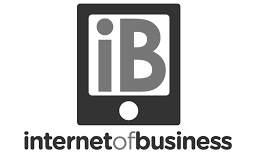By Tristan Watkins, CEO, BNP Paribas Leasing Solutions UK
The Internet of Things (IoT) may hold great promise for businesses, but many are put off by the perceived expense: in a 2015 Accenture survey, two-thirds of respondents indicated that cost was a significant obstacle to implementation. This is, to some extent, unsurprising: more and more companies are using the IoT, but we are still in the early stages of its adoption lifecycle and it is still somewhat perceived as a luxury rather than a necessity.
It’s an understandable attitude, but a mistaken one. When we attach sensors to commercial vehicles, we can receive real-time data about their performance and condition on an individual and fleet-wide level – ensuring maximum efficiency. In agriculture, it’s possible to boost yields with up-to-the-minute insights into grazing patterns. These improvements aren’t hypothetical. Consider the anticipated gulf in profits between IoT-enabled companies and the rest: one report puts it at around 10% over the next ten years, and it’s not unreasonable to expect it to widen further from there. Businesses that don’t adopt will be at a competitive disadvantage.
While the IoT can seem prohibitive when you individually purchase every piece of equipment and every software application, there are alternative methods of financing a deployment. By taking advantage of subscription models, companies can implement a workable, interconnected solution with relative ease.
Support
Technology implementation is often complicated: according to Gartner, some 75% of ERP projects fail. IoT deployment is no less complex: a number of moving parts have to be identified, accounted for, and integrated. If it goes poorly, you may well find yourself more exposed to security threats – and if it’s to go well, you’ll need access to the right expertise.
There is, of course, a good chance that you won’t have this in-house. During these early stages, IoT expertise is in short supply, and it is not something you can reasonably be expected to fully understand at first: even if you’re relatively IT-savvy, you’re entering a new world of actuators, convergence, and interoperability.
A principal benefit of subscription models is the support that can be provided as part of the deal. Where an outright purchase may often leave you adrift, the pay-monthly model will often include assistance with setup. When implementation is taken care of, you can start to think about how to use the IoT for meaningful productivity and profitability gains.
Financial management
The IoT already claims almost a quarter of IT budgets. Sensors are frequently expensive (at the upper end of the scale, they can cost around £750 each), and M2M deployments are long, complicated, and costly processes. If you need to quickly upscale in order to grow (or indeed, to quickly downsize in order to stay afloat) the money’s often already been spent.
Where a large one-off payment can deplete your annual budget, monthly payments make it possible to control your finances, and expand or narrow your solution as you see fit. By including everything you could need – sensors, actuators, applications, and more – it gives you more options and reduces your financial uncertainty.
Upgrade and update
The problem with technology is obsolescence. Two years ago, we were describing the IoT as the future; ten years ago, it was inconceivable that Blackberry phones would ever go out of fashion. The times move forward, and it’s vital that your business moves forward with them.
Investing in a number of sensors, for example, may seem like a good idea, but modern IoT sensors are not without problems: reconciling consumer demand for small sizes, low costs, and outsize, long-lasting performance is an issue that researchers and businesspeople alike have been grappling with for some time.
However, scientists have already found out how to create longer-lived, nanowire-equipped lithium ion batteries, which may well increase the lifespan and lower the energy consumption of these sensors. When something better arrives, no business wants to be lumped with ancient equipment for too long.
There’s no good reason that cutting-edge technology should be the exclusive preserve of large enterprises: the IoT is a major development, and businesses of all size can benefit from it. First, however, they need to resist the urge to buy everything for themselves, and rethink their approach to financing technology.
Naturally, there’s always more than one way to finance technology, so you’ll want to get your accountant to review your options before signing anything: it’s always vital to assess your requirements against the terms of the contract. An IoT deployment will require an amalgamation of hardware and software, so you may be looking at a hybrid agreement combination of longer-term (3-5 year) asset finance leases and shorter-term operating leases for relevant applications. These arrangements are generally more cost-effective and flexible, and certainly represent less of a commitment than a multitude of purchases, but they may not suit every organisation’s needs.
Every deployment will be different, after all. Nonetheless, the interconnected future offers serious improvements to efficiency and performance – whatever your business, wherever it operates, and however large it is.
Share post:
Featured in ...

Media contact
Suhale Vorajee
Head of Marketing and Communications
BNP Paribas Leasing Solutions UK
T: 01179 100 895
E: click here




